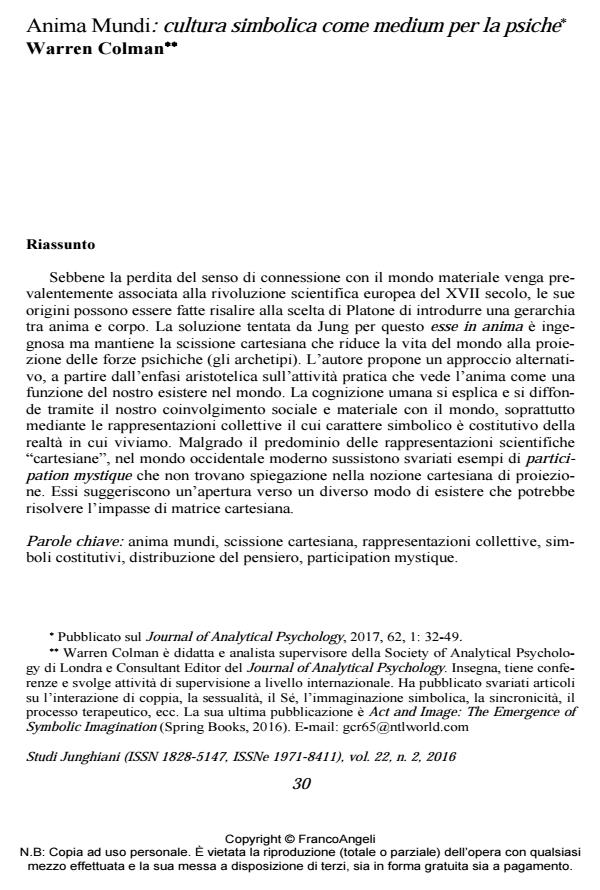Anima Mundi: symbolic culture as a medium for the psyche
Journal title STUDI JUNGHIANI
Author/s Warren Colman
Publishing Year 2017 Issue 2016/44
Language Italian Pages 19 P. 30-48 File size 235 KB
DOI 10.3280/JUN2016-044004
DOI is like a bar code for intellectual property: to have more infomation
click here
Below, you can see the article first page
If you want to buy this article in PDF format, you can do it, following the instructions to buy download credits

FrancoAngeli is member of Publishers International Linking Association, Inc (PILA), a not-for-profit association which run the CrossRef service enabling links to and from online scholarly content.
Whilst the loss of a sense of living connection with the material world is mainly associated with the scientific revolution in seventeenth century Europe, it can be traced back to Plato’s introduction of a hierarchy between soul and body. Jung’s attempted solution to this - esse in anima - is ingenious but maintains the Cartesian split by which the aliveness of the world is reduced to a projection of psychic forces (the archetypes). An alternative approach is proposed, rooted in the Aristotelean emphasis on practical activity that sees the soul as a function of our way of being in the world. Human cognition is extended and distributed by our social and material engagement with the world, especially via collective representations whose symbolic character is constitutive of the reality of the world in which we live. Despite the dominance of "scientific Cartesian" representations in the modern Western world, there remain numerous instances of participation mystique that cannot be captured by the Cartesian notion of projection. These indicate an opening to ways of being in the world that may lead us out of the impasse of the Cartesian matrix.
Keywords: Anima mundi, Cartesian split, collective representations, constitutive symbols, distributed cognition, participation mystique.
Warren Colman, Anima Mundi: cultura simbolica come medium per la psiche in "STUDI JUNGHIANI" 44/2016, pp 30-48, DOI: 10.3280/JUN2016-044004